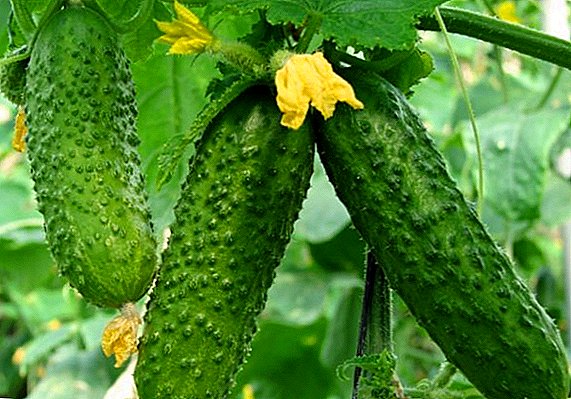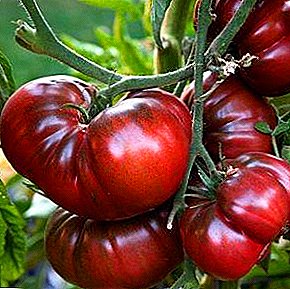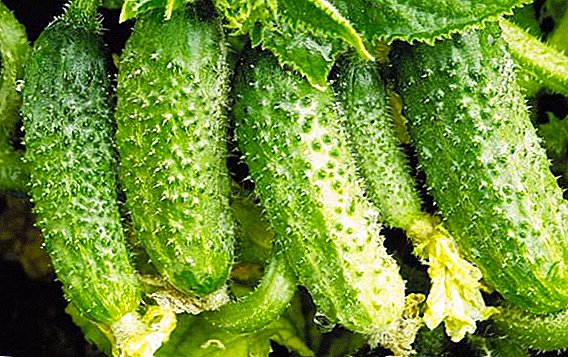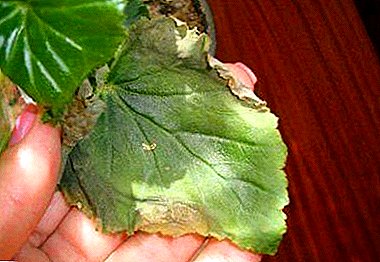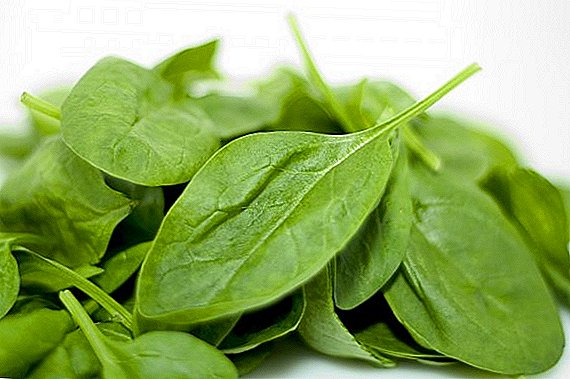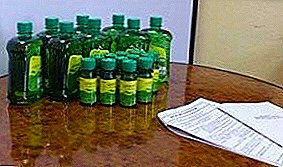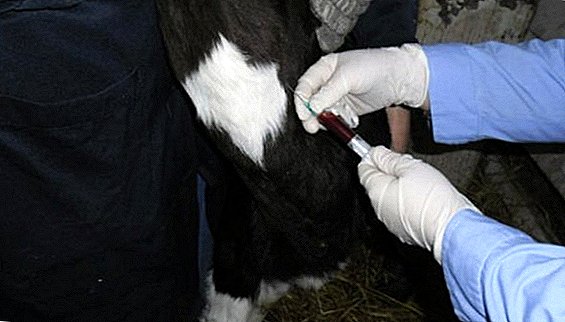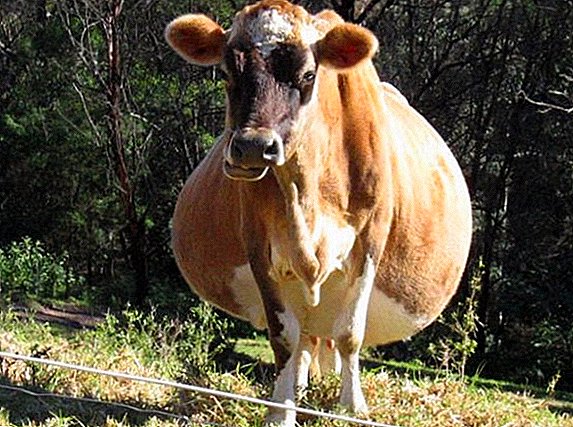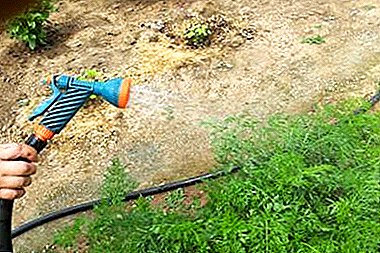
Carrots - one of the most popular root vegetables in the garden. To get a decent harvest, each plant requires care.
It is necessary not only to properly prepare the seeds, pick up fertilizers, anti-weed and loosen the soil, but also follow the rules of watering.
This article details the nuances of carrot watering. Given useful recommendations for planting carrot seedlings, preparing the soil and seeds for planting carrots in open ground.
Do I need to carry out watering the soil when sowing carrots?
The degree of soil moisture during planting determines the fate of the further growth of the root. Seeds require a lot of moisture in order to swell and germinate.
Carrots can be planted in two ways.:

- immediately in a moist and loose soil mixture;
- water it immediately after planting the seeds.
In the second case, it is impossible to flood the soil with a strong pressure of water - it can wash off the seedlings, which adversely affect the yield. Also, the strong pressure of water can drive the seeds too deep into the soil, as a result of which they will emerge later than required.
With insufficient moisture of the soil, the core and peel of carrots become coarse. As a result, the vegetable gets a bitter taste and becomes sluggish.
When to make the first watering and what?
As soon as the first shoots appear on the beds, they need to be watered. As the plant grows, the soil is moistened so that the soil is soaked to the depth of the lower part of the root (20-30 cm deep).
Some gardeners use a solution of potassium permanganate in primary irrigation.. This method allows not only to moisten the soil, but also to get rid of pathogenic microbes.
After sowing seeds and thorough irrigation, it is recommended to cover the beds with foil. It will not prevent the penetration of sunlight and at the same time allow moisture to stay longer in the soil.
How many times a month should I do this procedure?
After the initial “watering” the next time you can moisten the soil when the first shoots appear. However, the frequency of irrigation of carrots is directly dependent on weather conditions. When dry sunny weather is recommended to water the plant a couple of times a week.
 If the weather is too hot, you can increase the frequency up to 3 times a week. It is important that soil moisture is maintained, especially at the initial stage of carrot growth.
If the weather is too hot, you can increase the frequency up to 3 times a week. It is important that soil moisture is maintained, especially at the initial stage of carrot growth.
By mid-summer, the soil is moistened less frequently - about once every 10 days, increasing the volume of water. It is advisable to stop watering 3 weeks before harvest. On average, for the entire growth period, the plant must be watered.:
- May - 7 times, 5-7 liters per square meter
- June - 5 times. 10-11 liters per sq.m.
- July - 4 times, 12-14 liters per square meter
- August - 2 times, 5-7 liters per square meter
Step by step instruction of the procedure
- Watering carrots before germs is recommended from the watering can. It is the drip irrigation method that is most effective for obtaining a high-quality crop as it does not violate the integrity of the beds. When the plant gets a little stronger, it is allowed to water the beds from the hose with a strong water pressure.
- It is necessary to use only warm water. Irrigation with cold water may not have a beneficial effect on the result. In the summer, you can put a container with water in the sun and after some time the water warms up.
- It is necessary to water the plant in the early morning or in the afternoon. If it is watered during the day during the summer sun, the water can evaporate quickly, the plants will overheat and can even get burned.
Depending on the stage of development of the plant in open ground, its irrigation differs as follows:
- Before germination. Avoid moistening the soil from the hose so as not to wash off the seeds. Rain or drip methods are most acceptable in this period.
- After emergence of shoots. On average, 3-5 liters of water per 1 square. m landings. You can water the plant with a hose with a slight pressure of water.
- In a period of intensive growth. It must be remembered that the older a plant, the more water it requires. At this time, excess moisture will adversely affect the taste of the root. They can form many roots, which will affect the presentation of the product.
Errors
Excessive or insufficient soil moisture is the most common error when watering the root. Both are detrimental to carrots and can lead to the destruction of the crop.
First of all, the plant develops a root system, and only after that the root crop itself. Therefore it is necessary to carry out watering systematically. With such irrigation, carrots will develop evenly, gradually acquiring the correct shape and pleasant taste. The consequence of prolonged drought carrots are cracked fruit with a bitter taste.
 If the soil is overfilled with water, the carrots may start to rot right inside the soil, which will lead to its further death. In addition, with excessive watering, tops begin to grow. Most of the nutrients go to maintain it, because of which the vegetable itself receives them in smaller quantities and can grow quite small.
If the soil is overfilled with water, the carrots may start to rot right inside the soil, which will lead to its further death. In addition, with excessive watering, tops begin to grow. Most of the nutrients go to maintain it, because of which the vegetable itself receives them in smaller quantities and can grow quite small.
Below are a few helpful tips to help preserve and improve your harvest.:
- If you mulch the soil near the roots, the moisture will evaporate more slowly, which will reduce the frequency of irrigation.
- Most often, it is necessary to moisten the soil before the period until the tops appear. The formation of the first 3-4 stems indicates that it is possible to water the plants a little less, but it is necessary to increase the volume of water.
- Do not forget about loosening the soil between the rows after each watering. This not only increases the permeability of the soil, but also allows you to get rid of small weeds.
- Irrigation should only be done with warm water.
- In order for the carrot to be not only large but also juicy, you can dilute the matchbox of salt in a bucket of water and pour the soil 3-4 times over the entire growth season with such a solution at regular intervals.
- It is recommended to stop watering 3 weeks before harvest.
- It is important to monitor the level of moisture in the soil, to prevent drying and excessive moisture.
Timely watering, cleaning weeds, getting rid of pests, hilling and feeding will affect the quality of the carrots. Observing the rules for plant care you can get a decent harvest, which will please even an experienced gardener.


